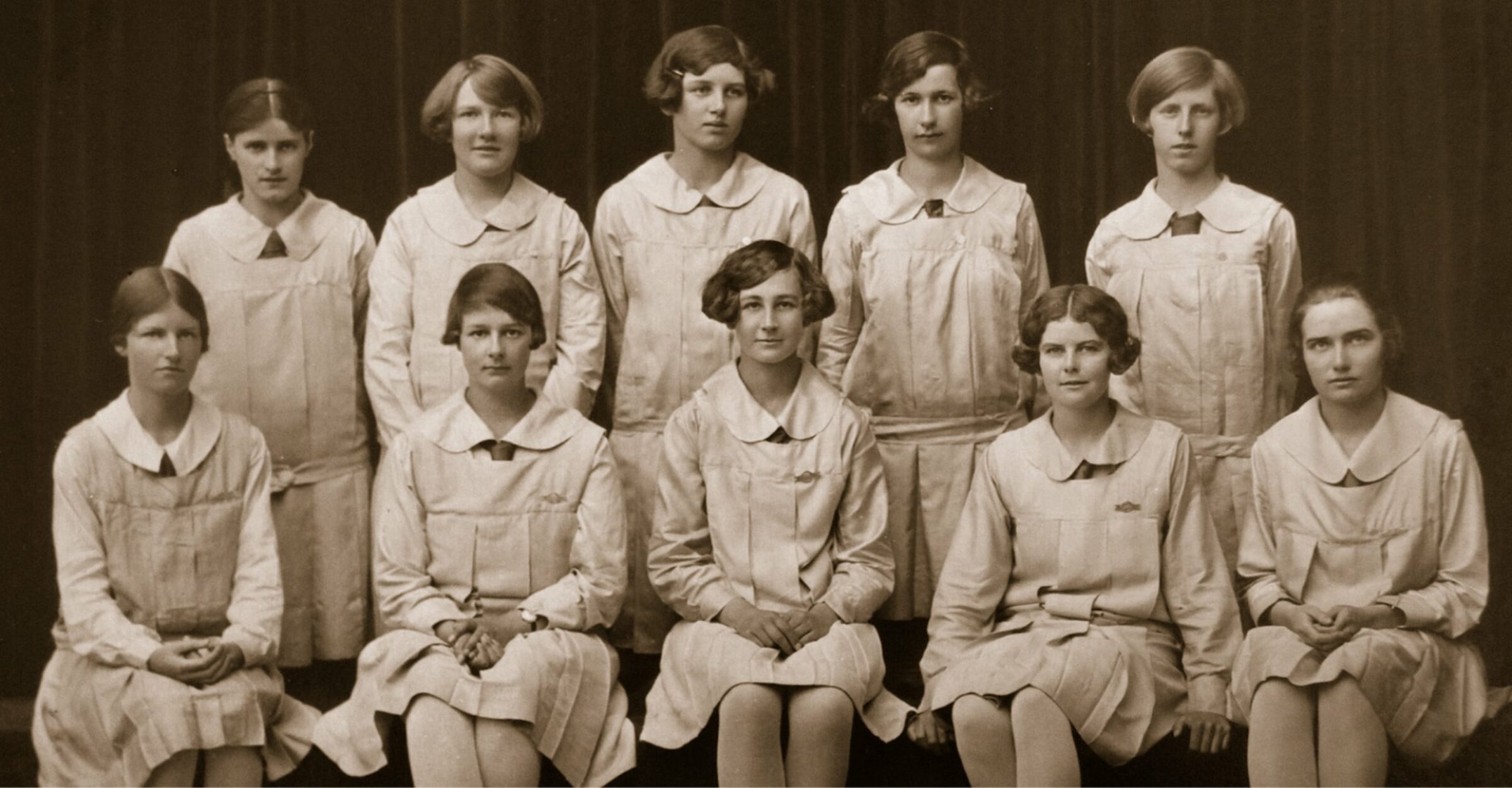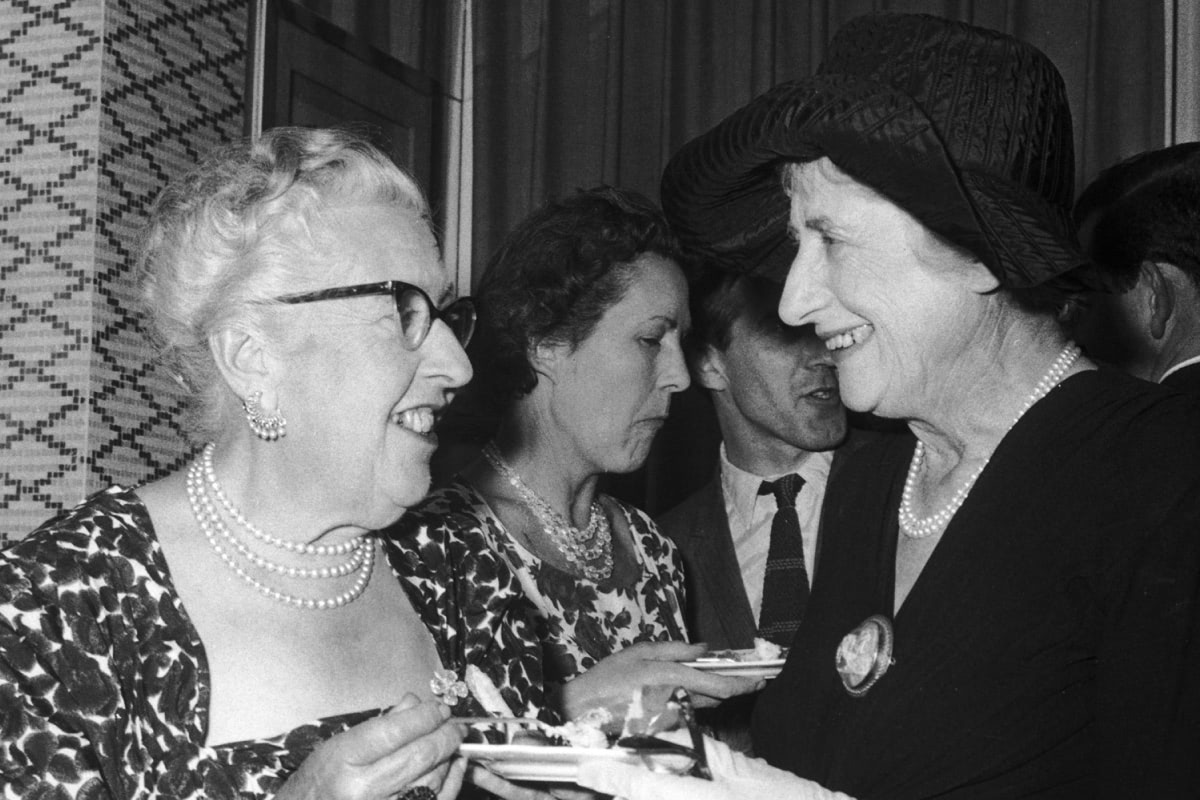Our History
From our beginning in 1910, St Margaret’s College has been a very special place for girls, their families and our teachers and staff.

Our College was founded in 1910 through the energy, faith and determination of Bishop (later Archbishop) Julius who convinced the Synod of the Diocese of Christchurch of the need to establish a school for girls to parallel that already set up for boys. The Sisters of the Kilburn Order in London were invited to set up the College and it opened at 28 Armagh Street with 50 pupils. Under the Sisters the College flourished and in 1913, with a roll of over 100, it moved into a new building on the corner of Cranmer Square and Chester Street West.
In 1931 when the Sisters had to leave their educational work in New Zealand, they handed over to the Diocese a College strong in numbers and rooted firmly in the traditions and tenets of the Anglican faith. The Diocese appointed Mrs Stephanie Grace Young MA (Oxon) as its first lay Headmistress and, in 1933, a Trust Board was set up to be responsible to the Diocese for the governance of the College. Its first Chairman was Bishop West-Watson, Bishop of Christchurch and later Primate of New Zealand.
Under Mrs Young’s leadership the College developed academically, culturally and with a widening range of sporting activities. Her deep personal faith had a lasting effect on the girls who passed through the College and she was responsible for establishing some of the important traditions that are still part of College life today, including the Founders’ Day service with its themes of dedication and its Ceremony of Lights.
In 1949 with the roll at 425 Mrs Young retired to be succeeded by Miss Jean Crosher MSc (NZ). By now, having long outgrown its Cranmer Square building, it was Miss Crosher who undertook the exciting and exacting task of moving the College to its present site at Winchester Street and establishing suitable facilities, especially for the study of science and mathematics.
In 1964, Miss Molly Mullan (MA) was appointed Principal and during her tenure the roll increased and the curriculum widened. It was she who established the Japanese department and appointed the first full-time Chaplain. Miss Mullan is also remembered for her boundless energy, her outstanding administrative ability and her total involvement in every aspect of the life of the College.
Her successor, Miss Jeanette Emmerson BA, spent only two years in the role of Principal before returning to Australia. The Deputy Principal, Miss Cynthia Blair BA, first became Acting Principal and was then appointed by the Trust Board to the position of Principal. She led the celebration of the College’s 75th Jubilee and oversaw the building of a beautiful Chapel to mark the occasion. During this time, other developments took place including the establishment of the Ngaio Marsh Theatre to enhance the cultural life of the College and to remember one of our most illustrious Old Girls.
In 1987, Mrs Susan Gardiner BA, BD was appointed to replace Miss Blair on her retirement. The College was to develop further under Mrs Gardiner’s leadership. The Junior School was re-established in a beautiful building sited at the Winchester Street entrance to the property. Julius, one of the boarding houses was rebuilt, and Kilburn, another boarding house, was totally renovated. Mrs Gardiner was also responsible for the development of innovative programmes for extension learning.
In May 1992, Miss Claudia Wysocki MA (Hons) was appointed to replace Mrs Gardiner. The College flourished and developed an emphasis on learning and development of the whole person. The International Baccalaureate (IB) was introduced and new facilities for science and technology were built, with the College remaining the only girls’ school in the South Island to offer its students the dual pathway of IB and NCEA, and one of the leading players in technology education in New Zealand.
In January 2008 Mrs Gillian Simpson was appointed on Miss Wysocki’s retirement. In that time, over 80% of the College’s buildings were lost in the 2010-11 Canterbury earthquakes, and the College was presented with unprecedented physical and emotional challenges. In Mrs Simpson’s own words, “There was no going back and we needed the courage and unshakeable faith to keep moving forward together to create our future.” The St Margaret’s College Foundation, which had been established in 2009 to generate and steward gifts and donations from the College community, generated and managed significant funds to enable the redevelopment and rebuild of world-class College facilities on a warm and welcoming campus.
In 2018 Mrs Diana Patchett was appointed Executive Principal on Mrs Simpson’s retirement. Mrs Patchett has overseen celebrations marking 110 years of the College, and the continuation of its strong tradition for educational innovation, blending an exceptional learning and academic focus with co-curricular activities and programmes designed to strengthen character, service and leadership skills.
Today, the College is governed by a Trust Board of nine members. These members serve as representatives of various groups with an interest in the school: parents, the Old Girls’ Association, The St Margaret’s College Foundation, the Standing Committee and the Synod of the Anglican Diocese of Christchurch. The Bishop of Christchurch is the Warden of the College. The Board meets regularly and is responsible for the governance of the College, including its financial security. The College is affiliated to the Independent Schools’ Council and the Executive Principal is a member of the Association of Heads of Independent Schools of New Zealand, the Association of Heads of Independent Schools of Australia and the Australasian Alliance of Girls’ Schools.
